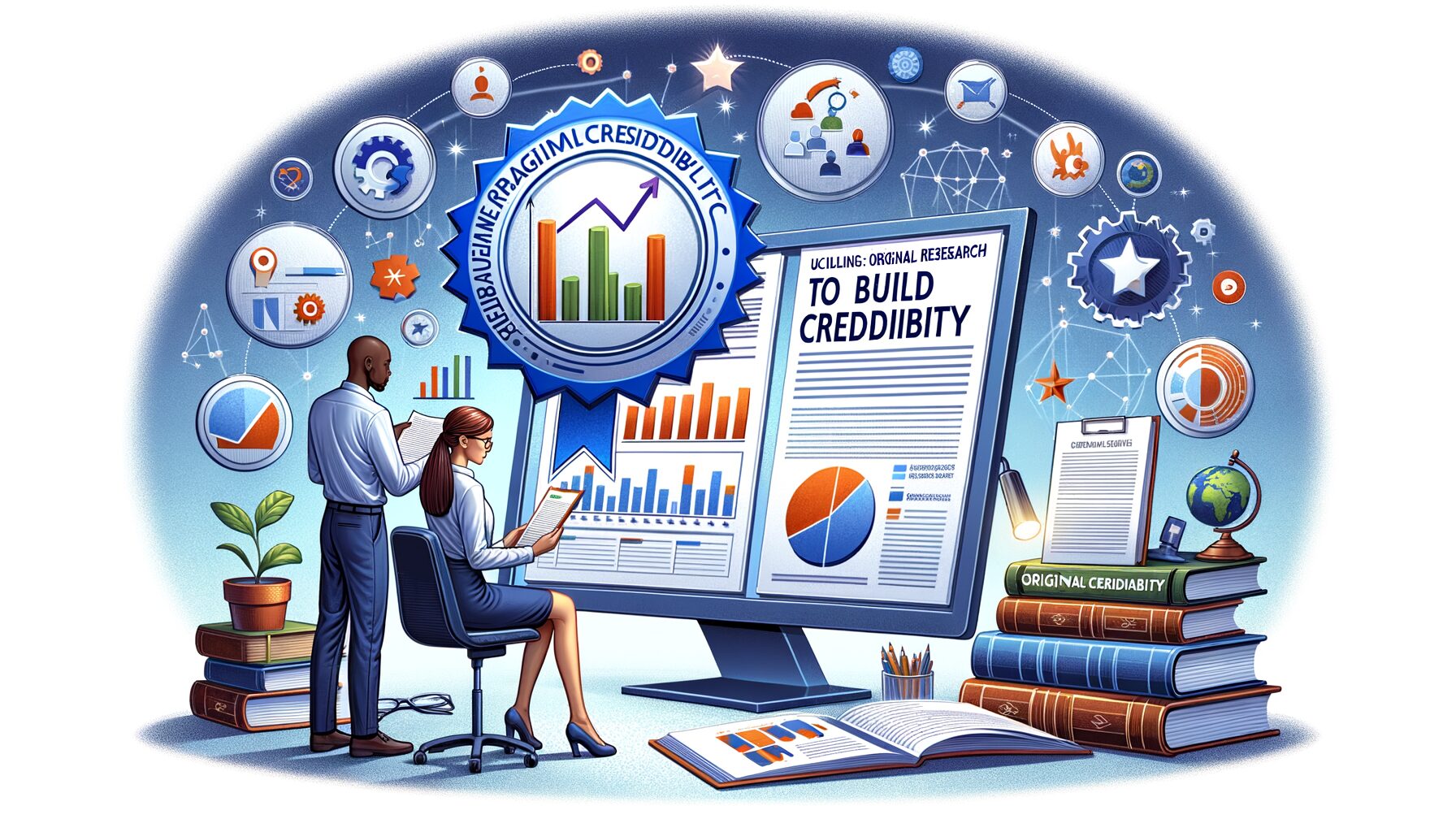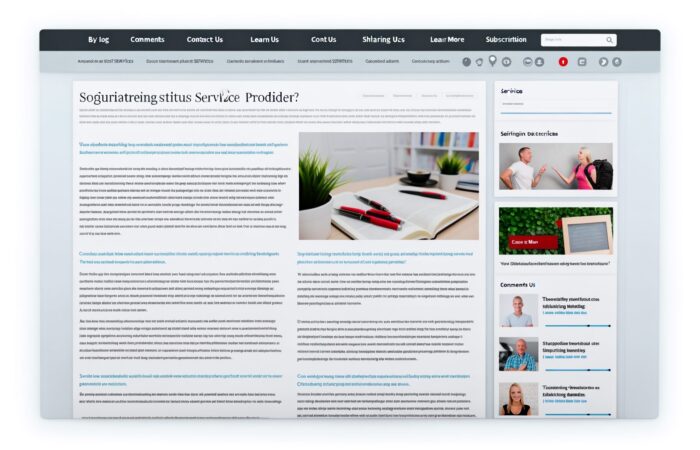Let’s chat about something that might sound a bit complex at first but is incredibly fascinating and absolutely crucial in the world of knowledge—yes, I’m talking about statistics and original research. These aren’t just academic buzzwords; they are foundational tools that empower us to make informed decisions and establish real credibility in any field, be it science, business, or even everyday life decisions.
Why Bother with Statistics and Original Research?
Imagine you’re faced with two articles on health. One spouts various health claims with no backing, while the other includes citations of studies and data that support its claims. Which one seems more trustworthy? I bet it’s the latter! This is the power of statistics and original research – they add weight to claims, making them more believable and reliable.
The Role of Statistics in Today’s Information Age
In a world bombarded with information, how do we sift the gold from the grit? Statistics! They help us understand patterns, test ideas, and make predictions. For instance, when researchers provide statistics like “people who eat two fruits a day have a 20% lower risk of heart disease,” they aren’t just making a random claim—they are offering a conclusion drawn from data analyzed through rigorous methods.
Building Blocks of Credibility
Now, it’s not just about using statistics; it’s about using them right. Credibility comes from not only having stats but having accurate, well-researched stats. Imagine you are building a house—the quality of your materials matters, right? Similarly, the quality of your statistics significantly impacts the strength of your conclusions.
Original Research – The Cherry on Top
Original research is like having your signature dish. It’s unique to you, and if done well, it can set you apart as an authority in your field. By conducting your studies, you aren’t just relying on what’s already out there; you’re contributing new knowledge. This not only adds depth to your work but also demonstrates a higher level of commitment and expertise.
Statistics + Original Research = Power Duo
When statistics and original research go hand-in-hand, they create a robust foundation for any argument or claim. This combination not only enhances the credibility of the information but also enriches the discourse within any field, leading to advancements and better decision-making.
Final Thoughts
To wrap it up, think of statistics and original research as superheroes of the academic and professional world. They arm us with evidence, fortify our claims, and elevate our work from ordinary to extraordinary! So, whether you’re a student, a researcher, or just a curious mind, embracing these tools can open doors to endless possibilities and insights. Ready to dive deep and make your mark with some stellar, credible research?
Defining Key Statistical Concepts and Their Impact on Research Quality
Let’s dive into the thrilling world of statistics, shall we? I know, I know, the word “statistics” might make some folks yawn, but trust me, understanding the basics can drastically elevate the quality of your research. And once you get the hang of it, it’s actually pretty fascinating!
First off, let’s talk about variables. Imagine variables as different characters in a story. Each one plays a unique role. In research, a variable could be anything from age to income, depending on what you are studying. Recognizing which variables to study often sets the foundation of your research.
Next up, samples and populations. Here’s the scoop: you don’t usually need to survey an entire population (like the whole United States). Instead, you select a sample. This sample is a smaller group that represents your entire population. The key here is ensuring the sample is chosen correctly to avoid bias, which can skew your results and misrepresent your findings.
Then we have correlation and causation. This is a biggie! Just because two things correlate does not mean one causes the other. For instance, just because ice cream sales and shark attacks both increase in the summer doesn’t mean one causes the other. They’re both related to warmer weather. Always keep this in mind to avoid jumping to conclusions in your research.
Let’s not forget about mean, median, and mode; these are measures of central tendency that help us understand the average or most common data points in our set. For example, if we’re looking at ages of people attending a concert, the mean gives us the average age, the median provides the middle age when all ages are listed in order, and the mode is the age that appears most frequently. These measures help simplify complex data sets making the data easier to discuss and understand.
An absolute gem in the toolkit is the concept of standard deviation. It sounds fancy, but it’s essentially a measure of how spread out numbers are in a data set. A low standard deviation means that the data points are close to the mean, and a high standard deviation means they are spread out over a wider range of values. This can help you grasp the level of diversity within your data.
And finally, statistical significance. This concept helps you determine whether the results of your experiments are due to a specific factor or just by chance. It’s a crucial checkpoint to ensure the reliability of your findings before you go out and share them with the world.
- Variables: Knowing what you’re measuring
- Samples and Populations: Representing your audience accurately
- Correlation and Causation: Understanding the relationship between data points
- Measures of Central Tendency: Simplifying data into understandable metrics
- Standard Deviation: Gauging data diversity
- Statistical Significance: Validating your conclusions
Grasping these statistical concepts not only adds credibility to your research but also makes your findings robust and defensible. So go ahead and wield these tools with confidence! Remember, every number has a story, and statistics help you tell that story accurately and persuasively.
Steps to Conducting Original Research That Enhances Credibility
You’re on a quest to ensure your research not only stands out but also rings out with credibility, right? I’m thrilled to guide you through some essential steps to make your original research utterly convincing. Let’s dive in!
Step 1: Define Your Research Question
Everything starts with a clear and concise question. What exactly do you want to explore? Pin this down, because a well-defined question is like a roadmap; it’ll guide every decision you make moving forward. So, take your time, brew some coffee, and really nail this part.
Step 2: Design Your Study
Designing your study is where the real fun begins. It’s about creating a blueprint of how you’ll gather your data. Will you conduct surveys, interviews, or experiments? Each method has its charm, but choose the one that makes the most sense for your research question. This step is crucial for ensuring that the data you collect is relevant and robust.
Step 3: Select Your Sample
Who or what will you study? In the world of research, we call this your sample. Selecting the right sample is key to generalizing your results to a broader population. Think about who your research affects and try to get a representative slice of that group.
Step 4: Collect the Data
Ready, set, research! This is where you roll up your sleeves and start the actual data collection. Whether it’s distributing surveys, conducting interviews, or running experiments, ensure you’re sticking to your study design closely. Consistency is your best friend in this phase.
Step 5: Analyze the Data
Once you have your data, it’s time to play detective. Analyzing your data lets you sift through what you’ve collected to find patterns, trends, or answers to your original question. Use statistical methods that best suit your data type. Don’t worry if numbers scare you; there are plenty of tools and software out there to help (we’ll get to those in a bit).
Step 6: Report Your Findings
After analyzing, comes the grand reveal: reporting your findings. This step is all about sharing what you’ve discovered in a clear, transparent, and accessible way. Use visuals like charts and graphs to help tell the story of your data. And remember, honesty is crucial here; report on your findings, even if they didn’t turn out as expected.
Step 7: Peer Review and Publish
Last but certainly not least, get some feedback. Submitting your research for peer review can boost its credibility tremendously. Critics can provide valuable feedback that can improve your work significantly. Once you’ve polished everything up, it’s time to publish. Seeing your study in a journal, not only adds to your credibility but also contributes to the world’s pool of knowledge!
In sum, conducting original research isn’t just about following steps; it’s a dance involving a lot of creativity, meticulous planning, and yes, a bit of courage too. Each phase is a stepping stone towards not just adding a line to your CV, but really impacting your field and beyond. Got your research shoes on? Let’s get moving!
How to Use Statistics to Support Your Research Findings
Hey, fellow research enthusiast! Have you ever wondered how to make your research findings stand out and truly shine? Statistics are your best friend when it comes to validating your hard-earned results. Here’s a friendly guide on how to wield the power of numbers to bolster your research.
Start with the Basics
First things first: make sure your statistical foundations are solid. You don’t need to be a math whiz, but a good grasp of basic concepts like mean, median, and mode is essential. Understanding what these measures tell you about your data can transform a baffling bunch of numbers into insightful conclusions that resonate with your audience.
Choosing the Right Statistical Tests
It’s like picking the right tool for a job. Depending on your research questions, certain statistical tests will be more appropriate than others. For example:
- If you’re looking into differences between groups, tests like the t-test or ANOVA might be your go-to.
- Exploring relationships? Consider correlation or regression analyses.
The key here is aligning your test choice with your research goals to support your findings effectively.
Visualize Your Data
They say a picture is worth a thousand words, and this couldn’t be truer in research. Graphs and charts not only make your findings more digestible but can also highlight the statistical significance that might be lost in a sea of text. Whether it’s a bar graph, scatter plot, or line chart, choose a visual that best represents your data story.
Interpreting Results Correctly
Here’s where things get a little tricky. Once the statistical tests are done, interpreting them accurately is crucial. Avoid common missteps like confusing correlation for causation. Just because two variables move together, doesn’t mean one causes the other. Also, watch out for p-values; remember, a p-value less than 0.05 typically suggests your results might not be due to chance.
Report with Honesty
Honest reporting is the backbone of credible research. Resist the temptation to over-interpret your statistical findings. If the results are inconclusive, say so. Transparency builds trust and credibility, showing that your research is conducted rigorously.
Seek Feedback
Before you publish or present your findings, get a second opinion. Input from fellow researchers or a statistician can help you spot potential flaws and refine your analysis. It’s like having a fresh pair of eyes looking at your work, ensuring that you’re using statistics in the most effective way to support your research findings.
There you have it! Incorporating statistics into your research isn’t just about crunching numbers—it’s about telling a compelling story that is backed by solid evidence. Use these tips to enhance your next research project, and watch as your credibility soars along with your insights.
Common Pitfalls in Statistical Analysis and How to Avoid Them
Hey there! Ever found yourself scratching your head while looking at your research data, wondering where things went sideways? You’re not alone! Statistical analysis can be a bit of a slippery slope if not handled with care. Let’s chat about some common missteps researchers might take and learn how to sidestep these potential pitfalls to keep your data analysis on point and effective.
Misinterpretation of Results
What it is: Jumping to conclusions without understanding the data or the analysis method fully.
How to Avoid: Always double-check your assumptions and consult the methodology used. If possible, get a second opinion or a peer review from a colleague.
Over-reliance on Complex Models
What it is: Using fancy, complex statistical models when simpler models could suffice.
How to Avoid: Remember, sometimes less is more. Start with simple models and only scale up in complexity if necessary. This will make it easier for others to understand your findings too!
Ignoring Sample Size
What it is: Not considering how the size of your sample can affect your results.
How to Avoid: More data points usually mean more reliable results. Ensure your sample size is adequate to support the conclusions you’re drawing. A power analysis can be a handy tool here!
Cherry-picking Data
What it is: Selecting data that supports your hypothesis while ignoring data that does not.
How to Avoid: Be objective! Always look at the full set of data, even if it’s not all telling the story you expected. This integrity forms the bedrock of credible research.
Failing to Use Proper Validation Techniques
What it is: Not confirming that your results are reproducible or generalizable.
How to Avoid: Implement cross-validation methods when appropriate and consider external validation to ensure that others can replicate your findings.
Ignoring Confounding Variables
What it is: Forgetting that other variables could be influencing your results.
How to Avoid: Identify and control for potential confounders. This might mean adjusting your analyses or even revising your study design.
Underestimating the Importance of Data Cleaning
What it is: Skipping thorough checks and clean-ups of the dataset before analysis.
How to Avoid: Dedicate ample time to preprocess your data. This includes handling missing values, removing outliers, and making sure your data is in the right format for analysis.
In summary, while stats and data analysis can seem daunting, steering clear of these common pitfalls will keep you on the path to credible, robust conclusions. Keep learning, stay curious, and remember — a well-conducted statistical analysis is a powerful tool in your research arsenal!
Case Studies: Successful Integration of Statistics and Research for Credibility
Do you ever wonder how successful research projects manage to look so, well, trustworthy? It’s all about the clever use of statistics and rock-solid research. Let me walk you through some real-life stories where combining the magic of numbers with insightful research created results that were not just compelling but also credible to the core.
1. Improving Healthcare with Data-Driven Decisions
Imagine being at the forefront of healthcare innovation, where every decision could be a matter of life and death. John Hopkins Medicine did just that. They used extensive statistical analysis to understand patient outcomes better. By analyzing trends and patterns in their vast databases, they could predict patient risks more accurately and improve care. Their original research, backed by solid stats, not only enhanced their credibility but also saved lives, showing just how powerful numbers combined with research can be.
2. The Eco-Friendly Home Products Company
Next up, let’s talk about a little company that could—let’s call them EcoHome. This startup wanted to prove that their products were not only greener but also more effective than traditional alternatives. They conducted research comparing their products against the market leaders, using statistically sound methods to ensure validity and reliability. The result? A booming business with a credible reputation backed by transparent and understandable data. They showed that going green doesn’t mean compromising on quality!
3. Financial Sector Innovations
Then there’s the tale of a financial tech company, FinnoTech. In the fast-paced world of finance, credibility is everything. FinnoTech used statistical analysis to develop algorithms that predicted stock market trends. Their research was published in respected journals, and the methodology was open for scrutiny—everything was out there in the open. This transparency not only bolstered their credibility but also attracted investors who were looking for a reliable and scientifically sound business to back.
4. Educational Programs That Make a Difference
Last but not least, let’s dive into the academic world with EdImpact. This non-profit aimed at enhancing educational outcomes through innovative programs. By rigorously testing their interventions with control groups and using detailed statistical data to report their findings, EdImpact provided clear evidence of their program’s efficacy. Their well-documented research helped them secure funding and expanded their initiatives to other regions, proving how robust research can propel good intentions into great results.
In each of these cases, the fusion of original research and thorough statistical analysis not only built a bridge to success but also established a foundation of trust and authority. When you’re planning your next research project, think about how you can integrate credible statistics and methods. Who knows? Your study could be the next success story we all talk about!
Fancy getting into the nitty-gritty of conducting your own reputable research? Remember, it’s all about asking the right questions, choosing the right tools, and never shying away from digging deep into the data!
Resources and Tools to Help You Shine in Research and Stats Analysis
If you’re diving into the world of original research and statistics, I’ve got some good news for you—you don’t have to go at it alone! The web is brimming with resources and tools that can make your journey not just easier, but also more exciting. Let me walk you through some of my favorites that I believe could really help amp up your research game.
Essential Tools to Get You Started
First things first, let’s talk about the basics. Whether you’re a seasoned researcher or just starting out, these tools are crucial in your toolkit:
- Google Scholar – Perfect for a quick literature scan or a deep dive into academic papers, it’s your go-to for finding credible sources and research.
- ResearchGate – Connect with other researchers, share your work, and ask questions. It’s like social media but for science and academia!
- Microsoft Excel or Google Sheets – They might seem basic, but these are powerhouse tools for statistical calculations and data organization.
Software for In-depth Analysis
Ready to level up? These statistical software packages can really boost your analytical capabilities:
- SPSS – Ideal for beginners and advanced users alike, SPSS is user-friendly and widely used in social sciences for complex statistical testing.
- R – A bit of a steeper learning curve, but oh-so-powerful. Perfect for those who love coding and need flexibility in their analysis.
- Stata – Another great option for econometrics and biostatistics. It’s straightforward and comes with excellent documentation.
Learning Resources – Because We Never Stop Learning!
Curious about where you can pick up new tricks or deepen your understanding? Check these out:
- Khan Academy – Offers fantastic, easy-to-understand videos on statistics and a range of other subjects.
- Coursera and edX – These platforms provide courses from universities around the world on both statistics and research methods.
- JSTOR Daily – Provides interesting articles that link to free content on JSTOR, which can help contextualize your study within broader themes.
Don’t Forget the Power of Networking
Lastly, never underestimate the power of a strong network. Platforms like LinkedIn and special groups on Facebook or Reddit can connect you with peers, mentors, and potential collaborators. Sharing ideas and getting feedback can be incredibly valuable and offer new perspectives on your research.
Armed with these tools and resources, you’re well on your way to conducting robust, credible research that stands out. Dive in, explore, and remember—every statistic tells a story, and your research can tell some of the best!











No Comment! Be the first one.